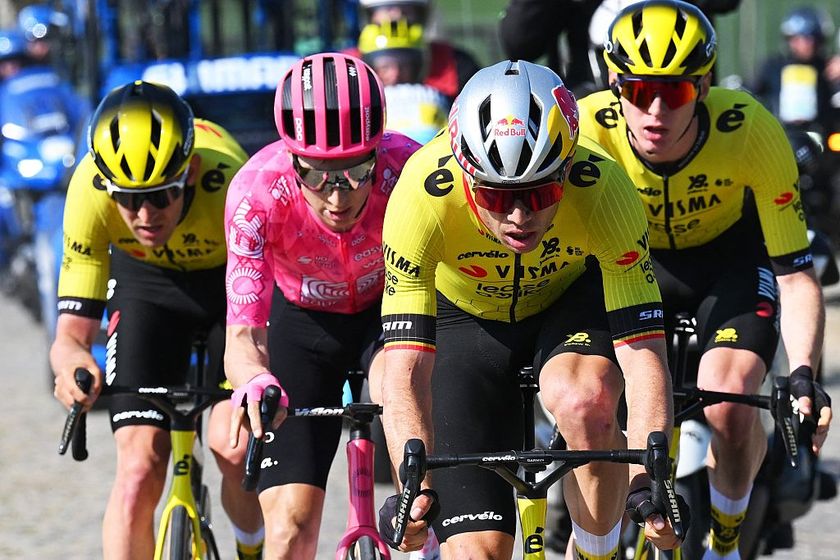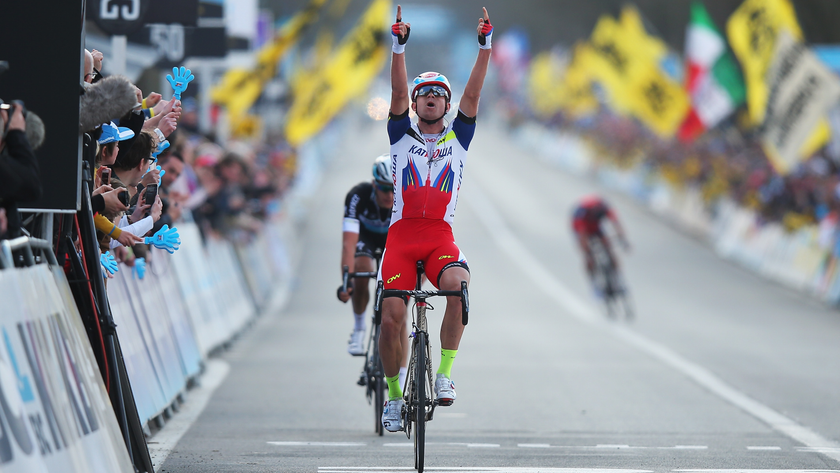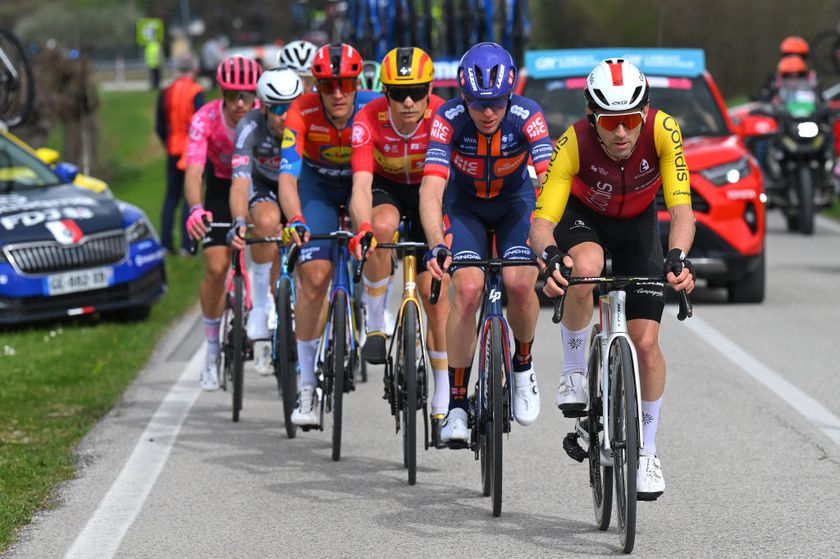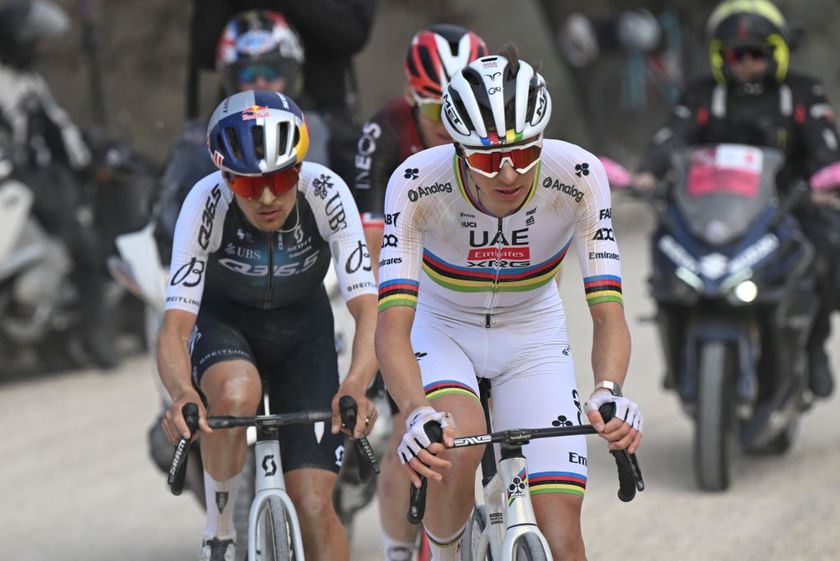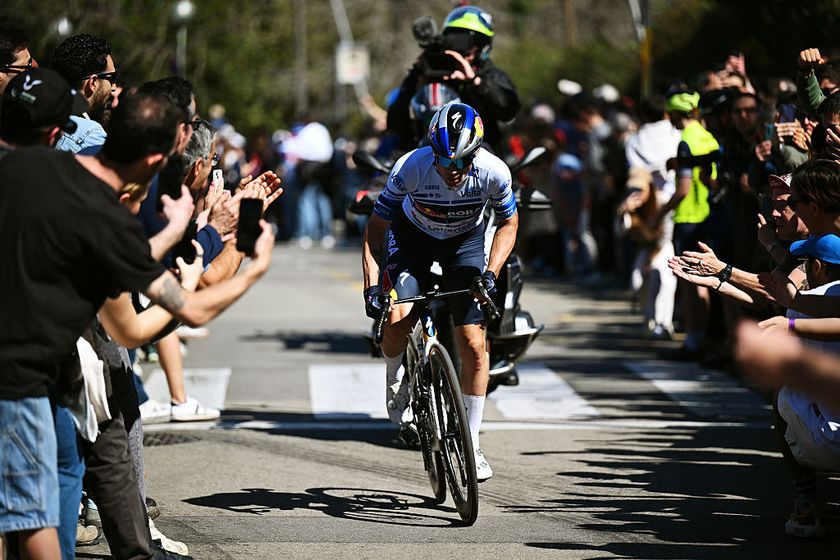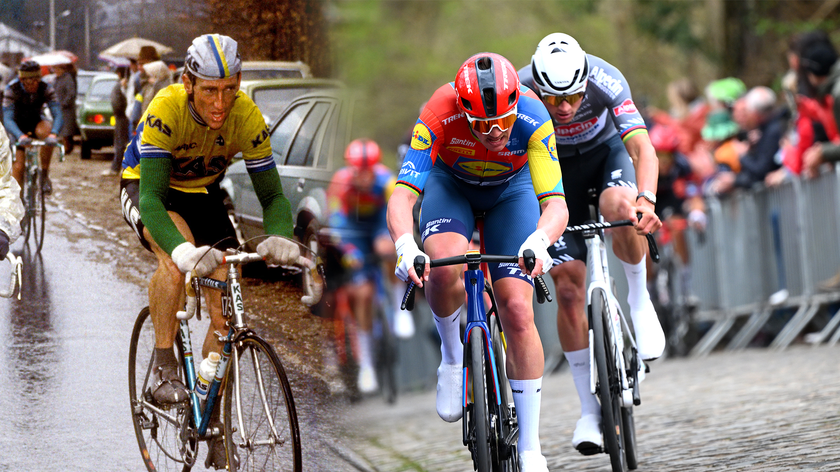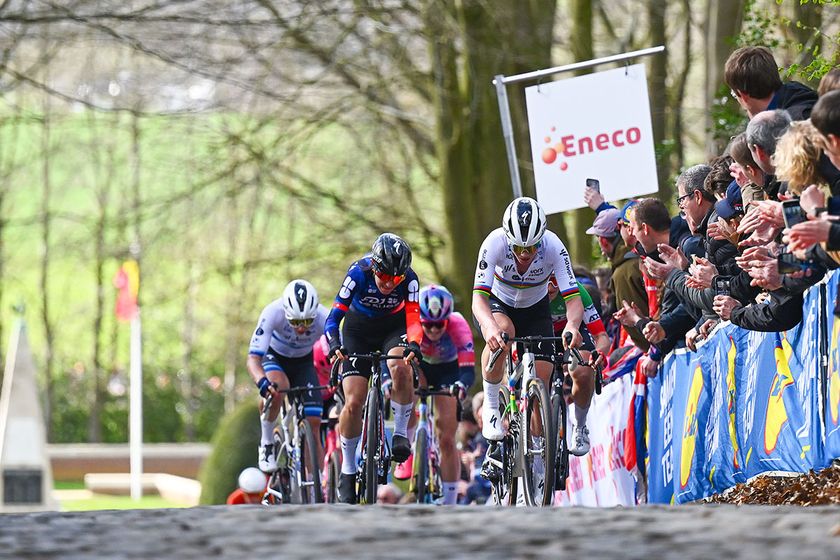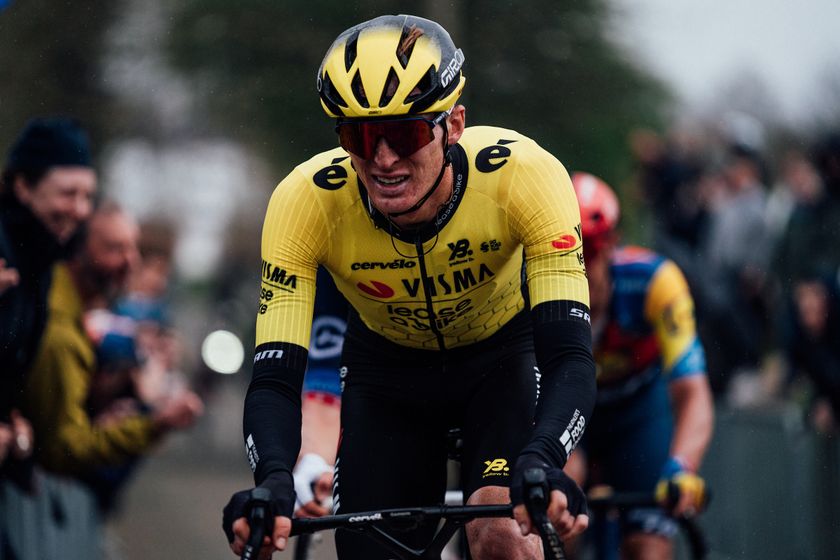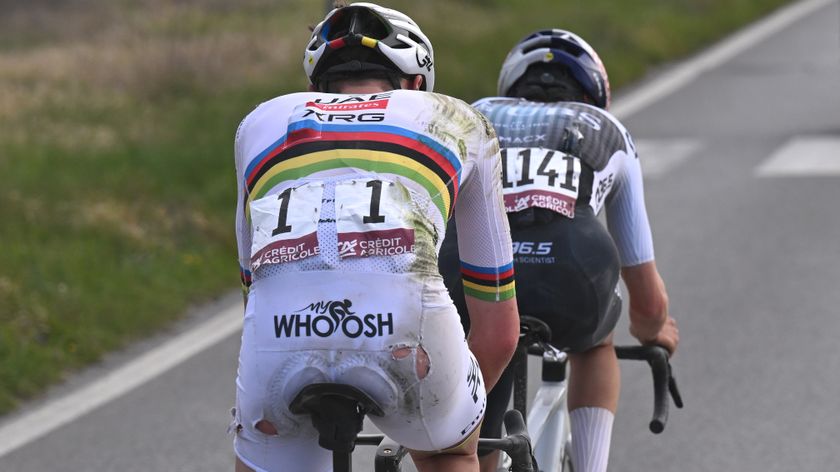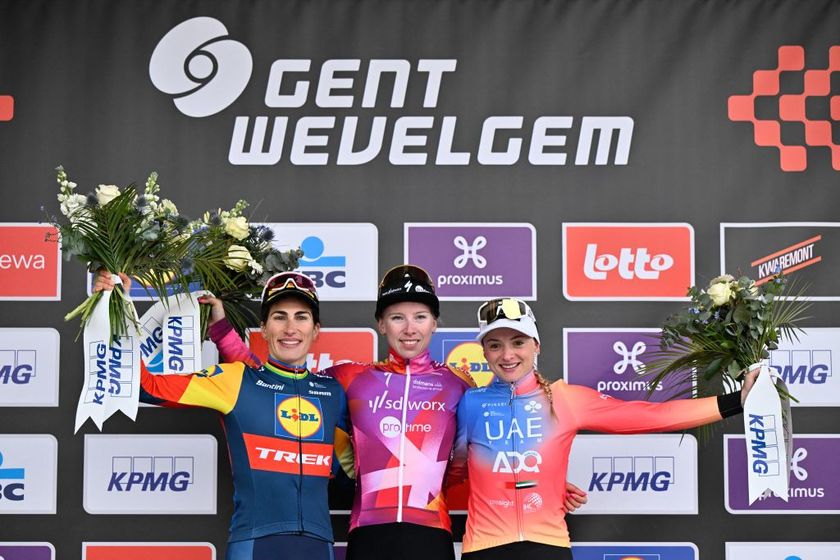Fitness questions and answers for August 1, 2005
Got a question about fitness, training, recovery from injury or a related subject? Drop us a line at...
Form & Fitness Q & A
Got a question about fitness, training, recovery from injury or a related subject? Drop us a line at fitness@cyclingnews.com. Please include as much information about yourself as possible, including your age, sex, and type of racing or riding. Due to the volume of questions we receive, we regret that we are unable to answer them all.
Carrie Cheadle, MA (www.carriecheadle.com) is a Sports Psychology consultant who has dedicated her career to helping athletes of all ages and abilities perform to their potential. Carrie specialises in working with cyclists, in disciplines ranging from track racing to mountain biking. She holds a bachelors degree in Psychology from Sonoma State University as well as a masters degree in Sport Psychology from John F. Kennedy University.
Dave Palese (www.davepalese.com) is a USA Cycling licensed coach and masters' class road racer with 16 years' race experience. He coaches racers and riders of all abilities from his home in southern Maine, USA, where he lives with his wife Sheryl, daughter Molly, and two cats, Miranda and Mu-Mu.
Kelby Bethards, MD received a Bachelor of Science in Electrical Engineering from Iowa State University (1994) before obtaining an M.D. from the University of Iowa College of Medicine in 2000. Has been a racing cyclist 'on and off' for 20 years, and when time allows, he races Cat 3 and 35+. He is a team physician for two local Ft Collins, CO, teams, and currently works Family Practice in multiple settings: rural, urgent care, inpatient and the like.
Fiona Lockhart (www.trainright.com) is a USA Cycling Expert Coach, and holds certifications from USA Weightlifting (Sports Performance Coach), the National Strength and Conditioning Association (Certified Strength and Conditioning Coach), and the National Academy for Sports Nutrition (Primary Sports Nutritionist). She is the Sports Science Editor for Carmichael Training Systems, and has been working in the strength and conditioning and endurance sports fields for over 10 years; she's also a competitive mountain biker.
Eddie Monnier (www.velo-fit.com) is a USA Cycling certified Elite Coach and a Category II racer. He holds undergraduate degrees in anthropology (with departmental honors) and philosophy from Emory University and an MBA from The Wharton School of Business.
Eddie is a proponent of training with power. He coaches cyclists (track, road and mountain bike) of all abilities and with wide ranging goals (with and without power meters). He uses internet tools to coach riders from any geography.
Get The Leadout Newsletter
The latest race content, interviews, features, reviews and expert buying guides, direct to your inbox!
David Fleckenstein, MPT (www.physiopt.com) is a physical therapist practicing in Boise, ID. His clients have included World and U.S. champions, Olympic athletes and numerous professional athletes. He received his B.S. in Biology/Genetics from Penn State and his Master's degree in Physical Therapy from Emory University. He specializes in manual medicine treatment and specific retraining of spine and joint stabilization musculature. He is a former Cat I road racer and Expert mountain biker.
Since 1986 Steve Hogg (www.cyclefitcentre.com) has owned and operated Pedal Pushers, a cycle shop specialising in rider positioning and custom bicycles. In that time he has positioned riders from all cycling disciplines and of all levels of ability with every concievable cycling problem.They include World and National champions at one end of the performance spectrum to amputees and people with disabilities at the other end.
Current riders that Steve has positioned include Davitamon-Lotto's Nick Gates, Discovery's Hayden Roulston, National Road Series champion, Jessica Ridder and National and State Time Trial champion, Peter Milostic.
Pamela Hinton has a bachelor's degree in Molecular Biology and a doctoral degree in Nutritional Sciences, both from the University of Wisconsin-Madison. She did postdoctoral training at Cornell University and is now an assistant professor of Nutritional Sciences at the University of Missouri-Columbia where she studies the effects of iron deficiency on adaptations to endurance training and the consequences of exercise-associated changes in menstrual function on bone health.
Pam was an All-American in track while at the UW. She started cycling competitively in 2003 and is the defending Missouri State Road Champion. Pam writes a nutrition column for Giana Roberge's Team Speed Queen Newsletter.
Dario Fredrick (www.wholeathlete.com) is an exercise physiologist and head coach for Whole Athlete™. He is a former category 1 & semi-pro MTB racer. Dario holds a masters degree in exercise science and a bachelors in sport psychology.
Scott Saifer (www.wenzelcoaching.com) has a Masters Degree in exercise physiology and sports psychology and has personally coached over 300 athletes of all levels in his 10 years of coaching with Wenzel Coaching.
Kendra Wenzel (www.wenzelcoaching.com) is a head coach with Wenzel Coaching with 17 years of racing and coaching experience and is coauthor of the book Bike Racing 101.
Steve Owens (www.coloradopremiertraining.com) is a USA Cycling certified coach, exercise physiologist and owner of Colorado Premier Training. Steve has worked with both the United States Olympic Committee and Guatemalan Olympic Committee as an Exercise Physiologist. He holds a B.S. in Exercise & Sports Science and currently works with multiple national champions, professionals and World Cup level cyclists.
Through his highly customized online training format, Steve and his handpicked team of coaches at Colorado Premier Training work with cyclists and multisport athletes around the world.
Brett Aitken (www.cycle2max.com) is a Sydney Olympic gold medalist. Born in Adelaide, Australia in 1971, Brett got into cycling through the cult sport of cycle speedway before crossing over into road and track racing. Since winning Olympic gold in the Madison with Scott McGrory, Brett has been working on his coaching business and his www.cycle2max.com website.
Richard Stern (www.cyclecoach.com) is Head Coach of Richard Stern Training, a Level 3 Coach with the Association of British Cycling Coaches, a Sports Scientist, and a writer. He has been professionally coaching cyclists and triathletes since 1998 at all levels from professional to recreational. He is a leading expert in coaching with power output and all power meters. Richard has been a competitive cyclist for 20 years
Andy Bloomer (www.cyclecoach.com) is an Associate Coach and sport scientist with Richard Stern Training. He is a member of the Association of British Cycling Coaches (ABCC) and a member of the British Association of Sport and Exercise Sciences (BASES). In his role as Exercise Physiologist at Staffordshire University Sports Performance Centre, he has conducted physiological testing and offered training and coaching advice to athletes from all sports for the past 4 years. Andy has been a competitive cyclist for many years.
Michael Smartt (www.cyclecoach.com) is an Associate Coach with Richard Stern Training. He holds a Masters degree in exercise physiology and is USA Cycling Expert Coach. Michael has been a competitive cyclist for over 10 years and has experience coaching road and off-road cyclists, triathletes and Paralympians.
Kim Morrow (www.elitefitcoach.com) has competed as a Professional Cyclist and Triathlete, is a certified USA Cycling Elite Coach, a 4-time U.S. Masters National Road Race Champion, and a Fitness Professional.
Her coaching group, eliteFITcoach, is based out of the Southeastern United States, although they coach athletes across North America. Kim also owns MyEnduranceCoach.com, a resource for cyclists, multisport athletes & endurance coaches around the globe, specializing in helping cycling and multisport athletes find a coach.
Chainring side
Right leg problems
Longer leg
Bike fit and back pain
Nerve damage
Leg length discrepancy
Crotch pain
Time off the bike
Positioning on MTB
Chainring side
Steve,
I've noticed in many of your helpful answers lately, you've mentioned if distance between the inner thighs at the seat post is different on one side or the other it may cause problems. But, isn't it natural for the gap to be bigger on the right because of the chainrings? Thanks.
Jason Warner
Belleville, IL, USA
Jason,
Right leg problems
Hi Steve,
In a recent Cyclingnews post when a reader asked about IT band/hip tightness you mentioned several explanations. I was curious about "left brain hemisphere being so dominant to the right" and how one would know that. Anyway, let me describe to you my situation and if you can help me I promise to mail you at least a $100 check, really.
I too come forward with my right hip and my right leg comes further inward. Nearly two years ago I got a very professional bike fit (from one of the top places in the US) and they put two 1mm wedges on my right cleat (keeping my foot from pronating). It helped, but I still have the following problems:
-numbness in my right foot bottom/toes
-right hip hiking (which I've gotten considerable physical therapy for including psoas work, pelvic stabilization, hip flexion, and quadratis lumborum stretching)
-over development of my right leg (at least that's how it looks in comparison to my left); my left leg just doesn't seem to hit the pedals as hard
I tend to always feel I favour my right side, even given the pain in my right hip, numbness in my right toes, etc. I have also had an x-ray leg length test that showed no discrepancies.
Any ideas on what could be happening? It continues to be a very frustrating matter for me. I would like to feel more equally balanced. Thank you.
John Parker
Albuquerque, New Mexico
John,
Longer leg
I'm dropping or favouring my left hip when going through the pedalling stroke. After various medical checks and so forth the hips, pelvis and back are correct. However my right leg is fractionally longer, by approximately 5mm. Would my left hip drop due to my right leg being slightly longer? If so, what do I do? Drop my saddle height or an extra inner sole for my shoe? It's starting to really tighten me up and getting frustrated because I'm really uncomfortable on the bike.
Ben Gloede
Ben,
Bike fit and back pain
I'm a 31-year old male triathlete, 6'0", 210lbs. I typically ride relatively short distances, maybe three rides of 20-30 miles a week, and one longer one of 40 or more. When I started pushing the distance of the rides earlier this year, I started getting some pain in my lower back. My legs would feel fine, but I was extremely uncomfortable for anything longer than 25 miles. Being in the aerobars was worse than sitting up. The pain is entirely muscular - I have no history of disc issues, and no sciatica or shooting pains down the leg. I should also say that when both running and swimming, I have no discomfort. In fact, running seems to loosen it up a bit.
I made an appointment with a reputable bike fitter about a month ago, and they made it clear that my 60cm Kestrel Talon was too big. Even with the shortest stem possible, I was reaching too far. So I got a new, smaller frame (a Cyfac) which they fit me to, and that seems to be much more comfortable, but I'm still having the pains. I took Steve Hogg's advice, and got the Kit Laughlin books from the library. While I have a lot of work to do to get as flexible as the author, I don't seem too inflexible.
So, without actually evaluating me in person, my question is this: what are the key things I can do to make this pain go away? Are there specific muscles that I should stretch/strengthen? Is there an aspect to my bike fit that may alleviate the pain? Thanks.
Rick Carragher
Burlington, NJ
Rick,
Rick Carragher responds:
1. Not sure how to guage this, but I don't think it's a problem. I stretch hip flexors regularly.
2. Same answer here. I have no problem touching the ground with straight legs.
3. I've been told that I am a heavy pronator, but I have normal arches.
4. About 6.5cm, the bottom of the cups of the aero bars are about 3.75 cm above the handle bars.
5. Depends on intensity, but after about 60 minutes. Quicker if I'm going hard
6. Road bars with clip-on aerobars.
7. 7.5cm
8. Profile Design - Carbon Stryke.
9. Fizik Arione Tri
10. It was a little nose up (very slight). On my last long ride (about 70 miles) I made it level. Made no difference in the back, I don't think.
11. I hope I did this right, but the nose of the seat is about 7cm behind. From the top of the nose of the saddle to the ground is 103.5 cm.
Rick,
Rick Carragher responds:
Steve,
Thanks so much for the advice. I've read your posts on CN over the last couple years, and have really come to respect that you are the authority on bike fit. As an aside, it really makes me crazy that all bike shops do not strive to learn how to fit people better.
I rode in the drops last night, and the pain certainly wasn't any worse. I pulled the Carbon Strykes in by about two inches. What a difference! I had someone look at my position before and after. She said that in the old aerobar position, my butt rotated forward and an arch appeared in my lower back. In the new aerobar position, my hips and butt did not change. I'm quite certain this will make a huge difference.
Rick,
Nerve damage
Hello,
I am a 29 year old serious racing licensed cyclist from South Africa. I am 1m 73cm and weigh 65kg.I have recently picked up a serious problem with a damaged nerve in my right leg, The spot is on the right hand side of the top part of the calf muscle(about 2 cm under the middle part of the knee,towarts the right side).This started about 8 weeks ago and since then I have not been able to sort out the problem, the pain gets so bad that I sometimes just have to stop and get of the bike it becomes impossible to pedal at all with that side. I have now stopped training for 3 weeks and would like to start training next week. I have been seeing a lot of people about this in the last couple of weeks from trainers to biocinetics to sports doctors. The problem is that I get mixed information from everybody, as to how this started.
The following is what I can tell you about changes that I have made:
1. I got a new bike about three months ago; a Cervelo Soloist, but I was very careful with making sure that the setup was done exactly the same as on my previous bike.
2. During this time I also got new pedals, the new Look Keo cromos (my old pedals were look pp 357 with black cleats, I have always used black cleats) on the new pedals I started using red cleats. The problem is that on my right leg I tend to pedal with my heal towards the frame (inwards) and that's why I used to use the black cleats - less float. I also have a tendency to pedal more toe down on my right leg and heal down on my left, why this is I don't know, but it has always been this way. At the end of last year I started to pick up problems with my left legs tendons at the back of the leg so my coach advised me to start trying to pedal more heel down with my right leg, but this is very difficult in race situations. The pain in my left leg did go away. I also went trough a very tough training schedule before this started.
My Questions are the following:
1. Could the fact that I pedalled inwards with my right leg with the red cleats be part of the problem on the outside of my leg? I have been advised to try and move the cleats a bid so that I pedal more heal outwards, would this not put more stress on the outside part of my calf?
2. The doctor said that part of the problem is that I pedal more toe down on this side and I should try and pedal more heel down, but it seams to me that when I do this the pain comes back more easily (I might be over extending when I force the heal down).When I ride in the drops I can also feel my right leg on my chest coming up more than the left.
3. Should I try and do something about the fact that I have a different riding style with my right leg? Could it only be the cleat position inwards or outwards that caused this or the toe down as well?
The description they used for the nerve is the peroneale nerve. I would appreciate if you could give me some advice on these questions as I am not sure what to do with this and do not want to cause any further damage. Thanks.
Willem Bezuidenhout
Willem,
Leg length discrepancy
Help!
Have I gone mad? Or is it possible that every third time I go to ride, the leg I thought was longer becomes short and vice versa? Seriously, since having a wreck seven years ago I have been trying to isolate the sensation I described above. I sustained injury to my left knee and ankle and put in some decent physical threrapy to get back to the point where I can put about 200 miles in a week. However, when I try to go beyond this mileage the sensation becomes increasingly obvious.
I am 29, stand 5ft 10.5 with a 34 inch inseem. I am 155 lbs. and ride a 57cm Cannondale. I have tried the following things with some positive effect:
1. Following the injury I returned to riding with clips and straps for three years as the clipless system of the era did not allow comfortable float.
2. Returned to clipless using Time ATAC pedals for road and MTB use. This helped return me to a smooth and more circular pedal stroke.
3. Recently switched to Specialized Body Geometry shoes. The canted footbeds have helped a lot.
4. Off to get custom orthotic inserts in three weeks.
5. Recently switched from 172.5 to 175 cranks, now riding Time RXS pedal and this combo seems ok to me.
I guess that leave the reamaining sensation and the obvious strength and muscle mass discrepancy. What can I do to balance this out? I have tried weight training in winter but still wind up about the same. I have seen an orthopedic surgeon as well...he doesnt see anything there, where do I go next?
James Shepperd
James,
Crotch pain
Hello, I am 20 yrs old, cat3 road racer and have been riding for about five years now. I recently decided to take a rest from racing and training hard considering that there aren't any good races right now and because I've been racing since February. So in doing so I would just find myself doing really easy rides on my trainer. One day I realized that the bike I use on the trainer (my track bike) feels really comfortable, more so than that of my road bike. So like any curious person would, I pulled out the measuring tape and found out that the seat on my track bike was over 4cm shorter than that of my road bike. Alarmed I quickly changed that I lowered my seat so that they were the same length. Now, I feel better, yet strange on my road bike. Obviously I am not used to it, but I already have put in some long rides (5hrs) in the new position and havent experienced any knee problems. So then I decided that I would do the local group ride with the new position to see how my legs would feel. I did, and although I was dehydrated, I rode really well except for this really agonizing pain in that area between my scrotum and my anus. It only happened though, when, after standing on the pedals, I would come back to sit and BOOM! the sharpest pain sensation ran through my body like a blood curl. Was this pain associated to the new position? Is it just my body's way of telling me that I should do some more slow rides in this position before I do any of the hard stuff? Or should I just move my saddle back to where it was? Thanks in advance for you reply.
Giancarlo Bianchi
Giancarlo,
Giancarlo Bianchi then responded:
Firstly I would like to thank you for your speedy reply, now I will try to answer your questions as best that I can. No I do not have the same model seats on my track bike as I do my road bike. My road bike has a Fizik Aliante, and my track bike appears to have Logic(?) branded onto it (the name is really faded, but it says Logic. It looks really similar to Lance's saddle...really big and goofy looking, but confortable as hell). I moved my saddle forward like you said (is there a formula for that, because you were right on the money with that 13mm), but have yet to ride it, I will tomorrow though, and see how that feels. The gap between the top of the seat post (measured from the middle of the rails) ranges from 1mm to 3mm depending where you measure it from. (the Aliante has a carbon base and its very curvy, so that measurement is not constant). And lastly, I ride a 54 cm (medium) Blue RC4. (http://www.rideblue.com/rc4.html).
Giancarlo,
Time off the bike
Hello Ric,
Great articles throughout the Tour - thanks.
I just read your comments on what it takes to ride the Tour, funnily enough I was just thinking about that myself.
I thought I read somewhere that Floyd Landis had power to weight numbers somewhere close to or even better than Lance (being that he's a bit lighter I guess) and there are probably other guys too - climbers etc. All these guys finish behind the leaders, why is that? Aside from their time trialing losses they also lose in the mountains.
To me it seems that it must be something to do with recovery? As far as I know though, we don't have any way to measure that, except sending the boys out on their bikes for three weeks and then seeing who is still putting out the power. Should be interesting when you guys get your hands on the data from all those power meters they were draggin around!
Now a 'quick' question for you - would it be possible to train to race at a first cat level if your job involved working overseas for a month then having one month completely off. I would bring a bike and trainer (computrainer or something) and would assume that I could get a couple hours a day to ride while overseas but I don't think riding on the road would be an option. I was thinking the first and last weeks overseas would be recovery weeks so that would leave two weeks to try to maintain fitness with the appropriate training - would it work? Thanks.
Duncan Clarke
Hi Duncan,
Positioning on MTB
I've read the posts covering road bike fore/aft position and the use of the no hands in the drops technique. Can the same approach be used for mountain bike positioning but just keeping the hands on the grips?
Michael White,
Logan, UT
Michael,
